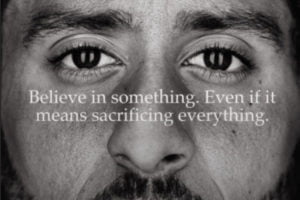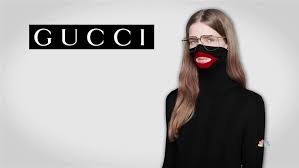In light of recent global events and the subsequent fallout, primary amongst them being the #metoo & #blacklivesmatter movements, Diversity & Inclusion (D&I) has become the key mantra across the world. Contributing towards this has been an increased awareness due to the ease of access to information via the extensive reach of mobile phones and social media platforms.
Between Gen Y and Gen Z, anyone under 40 is covered and is the primary target, both as a workforce and as a consumer base. These generations are not only tech savvy, but are very woke. They would trade their beliefs over their paycheck any day and they are more likely to work for or buy from a brand that aligns with their values than otherwise. If anyone is found deficient they swiftly cancel them and move on.

The days of building and maintaining a macho culture for corporate success are long gone. It is not just frowned upon, but, if exposed, can lead to a potentially existential backlash from employees, customers and shareholders. Today values like inclusivity and empathy are given brownie points and lead to long term success.
A potential customer or employee looks up on social media and researches about the company’s values, ethics and policies to gauge alignment, before they buy a product or even apply for a job.
So where does this leave business? If they want to survive, they have to up their game and ensure they align their product and values with the current social thought process.
The subject of having the right value, ethos and ethics depends on a moral compass and flows down from the leadership team. It depends on how businesses conduct themselves and encompasses issues such as human rights, social responsibility, environmental and ecological stewardship along with global capitalism.

Nike took a stand when it featured Colin Kaepernick with the slogan “Believe in something. Even if it means sacrificing everything. Just Do It”, referring to his kneeling protests during the national anthem against police brutality in the US was met with heavy protests. However, Nike dug its heels in and stood by it. Although it saw a slight dip initially, overall it resulted in Nike’s value increase by $6 billion, a massive positive effect by taking a stand.
However, in today’s globalized and interconnected world of companies, an outsider’s view is not enough. A diverse workforce is needed to be able to appreciate issues, bring in authenticity, local nuances and appropriate behaviour. An example could be baby food company Gerber selling its products in Africa with a picture of a cute baby on the bottle without realising that in Ethiopia products usually have pictures on the label of what’s inside as many consumers can’t read.
D&I can help businesses avoid this by bringing in varied views while celebrating the differences among people. Research has shown that companies with a diverse workforce perform better. They are able to win top talent, improve their customer and employee satisfaction, which ultimately leads to better financial returns.
It acts as a key determinant to help alleviate cultural issues, so is being spearheaded visibly by corporates now. It has become common for companies with employee friendly and D&I policies to do inclusive marketing, showcasing their ethos and creating a relatable brand, to attract customers and top talent.

The Gucci black face sweaters mishap is a perfect example D&I failure at every level. When a model walked down the runway in Gucci 2018 Fall/Winter show wearing a turtleneck sweater resembling a blackface with red oversized lips the backlash was almost instant on social media. Gucci not only apologised and pulled out the offending item but it led to major changes in the organisation to avoid this ever happening in the future. It could be argued that if at least one black person had been part of the design team or at any stage, this could probably have never happened.
Let’s be honest, we are all subject to a reality tunnel vision, wherein we have developed a subconscious set of mental filters formed from our beliefs and experiences. So, how we interpret the world will be different from how others see it. Having a diverse and inclusive culture leads to alternate and authentic viewpoints being brought in and helps negate the effects of reality tunnel vision.
It is relatively easy to solve diversity through updating the recruiting process to hire a diverse talent pool, representing gender, ethnic, racial, sexual orientation, age and religion amongst others.
Although, having people in an organisation is not enough. Rather, engaging them at all levels through an open culture and listening to them is essential to ensure we are on the right path. Inclusion needs having an open mind, accepting and respecting people for who they are and valuing their opinions. It’s a whole new work culture.
Inclusivity will also help businesses balance diversity and inclusivity between groups, for taking a stance does not equate to preferring one group over another, majority or minority. The idea is to create harmony, to treat everyone equal and not take sides.

A principle contemplated of late is – if it is about me don’t do it without me. Include people from all walks of life like race, age and gender but make sure to include people from your target audience to ensure both the product and the brand resonates with them. For example, a product for teens should have teens in the process, if we want to be able to reach and resonate with their thought process.
Institutionalised D&I policies, raising awareness among people about what is conscious and unconscious bias, creating an inclusive and conducive work environment where people are free to express their opinion without repercussion and respecting everyone’s views would all lead to a very enriched work experience and a robust business. It will result in attracting a diverse and engaged talent pool and have a resounding effect on having more aligned goals to the current generation. It will lead to building the right brand presence and help develop the foundation for a future in the marketplace.
Unless corporations manage to create a diverse and inclusive culture of doing business without bias and hold themselves accountable to it, it will become increasingly difficult to survive in the current world.


